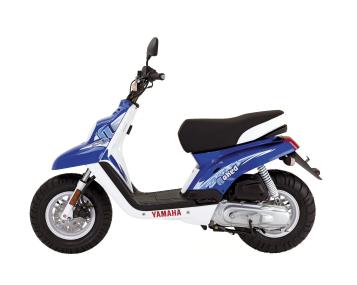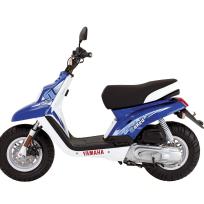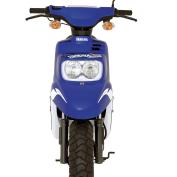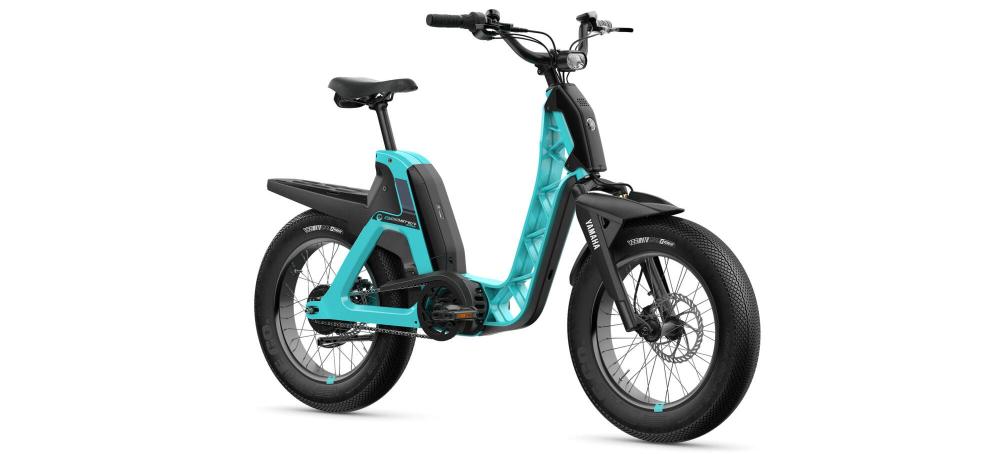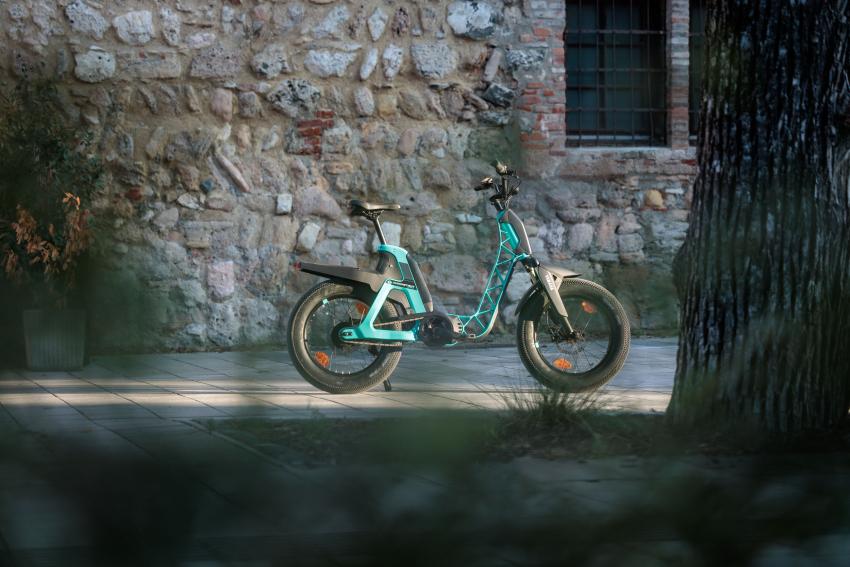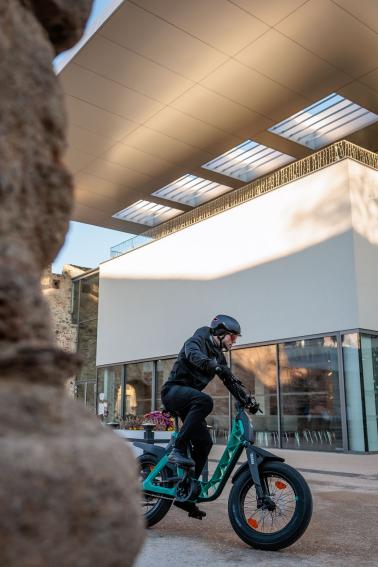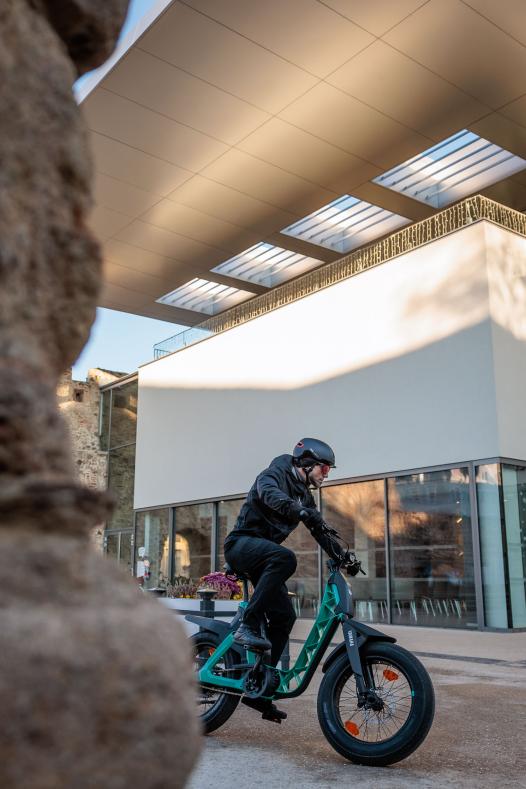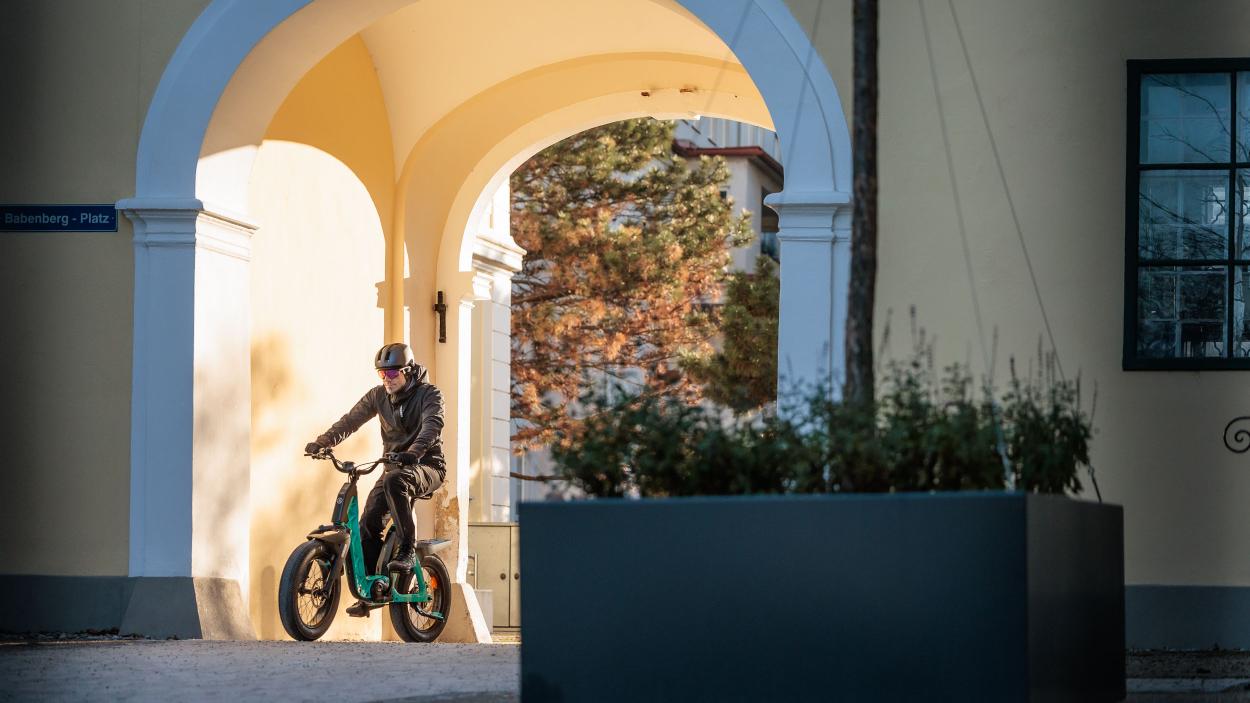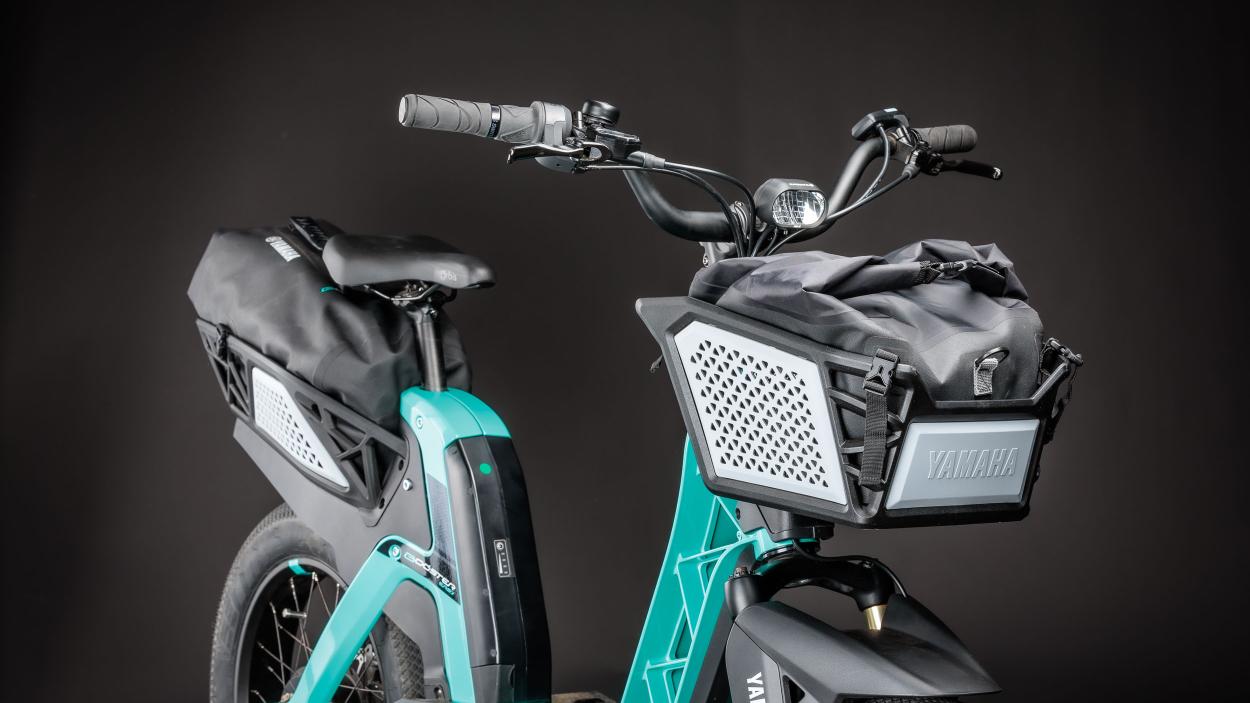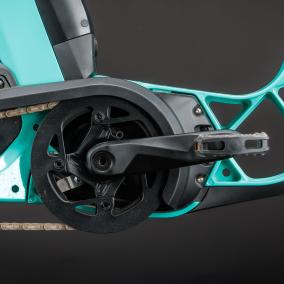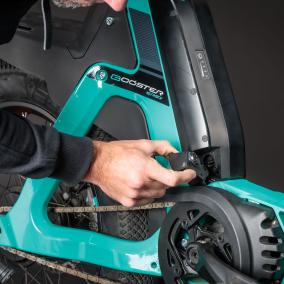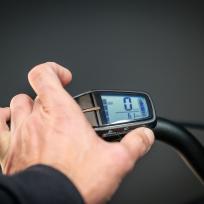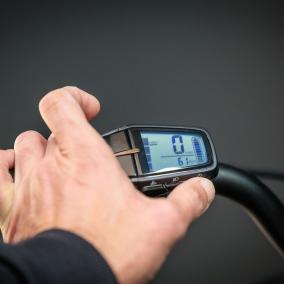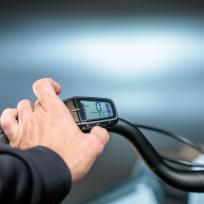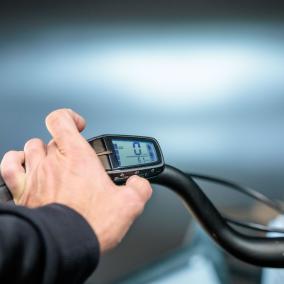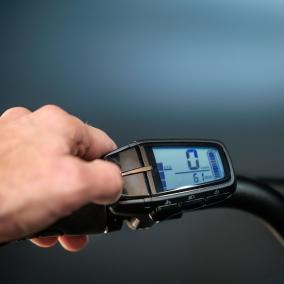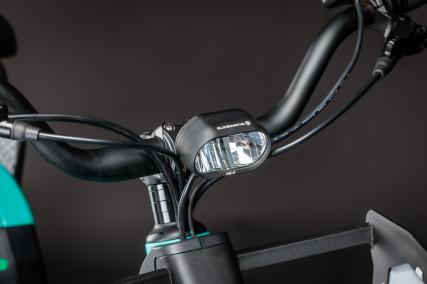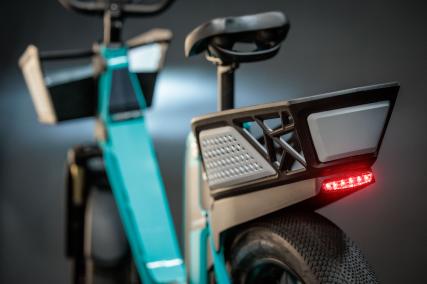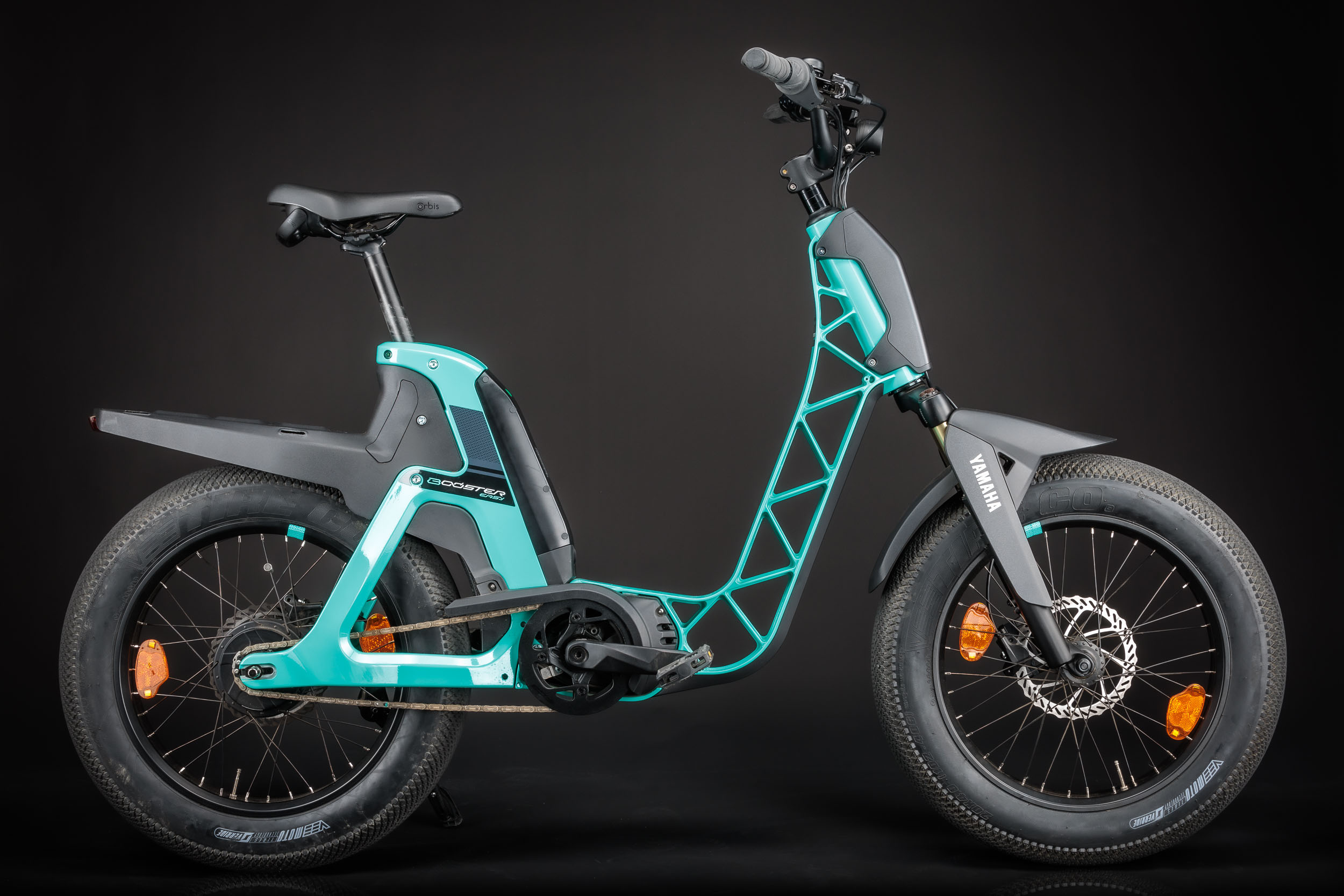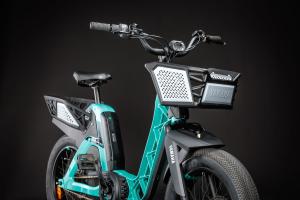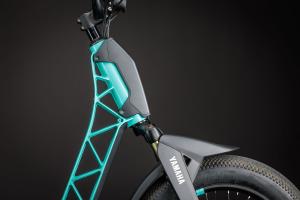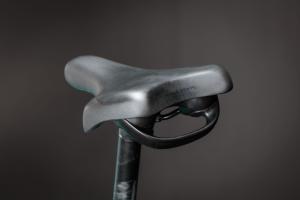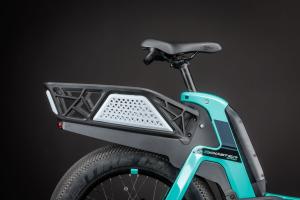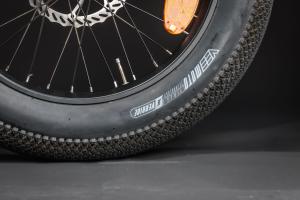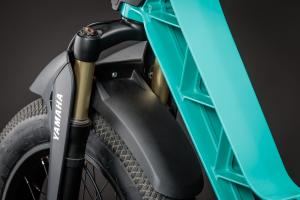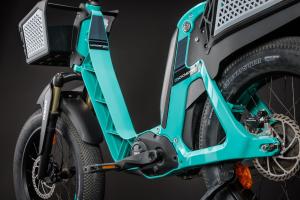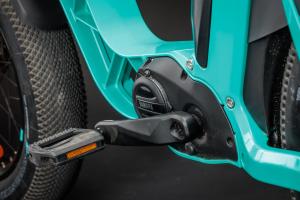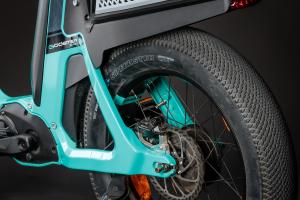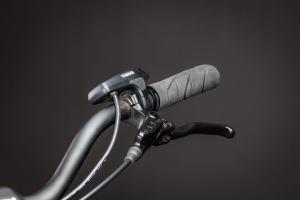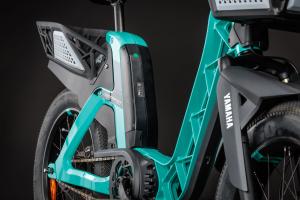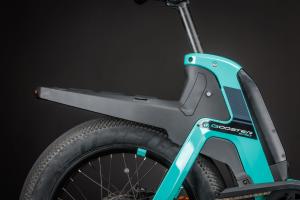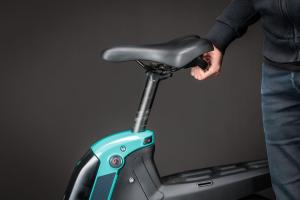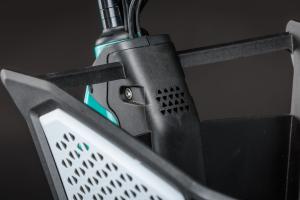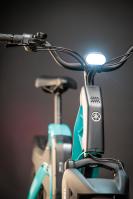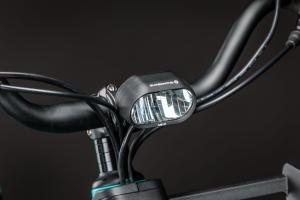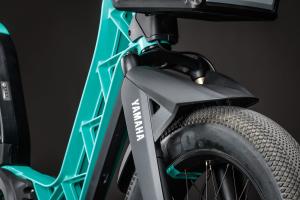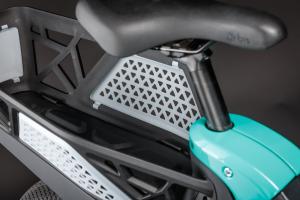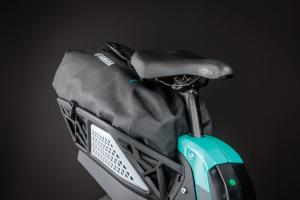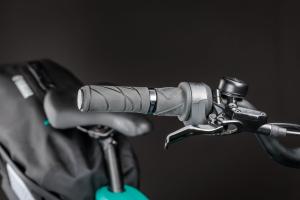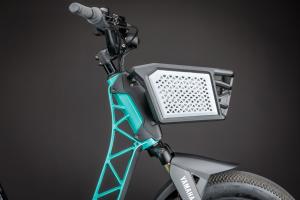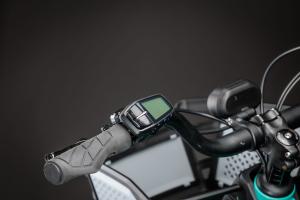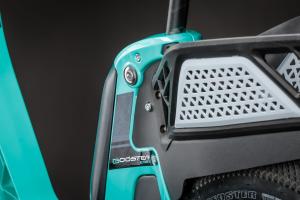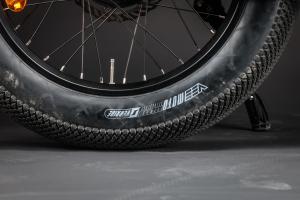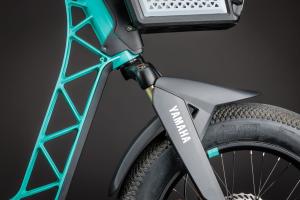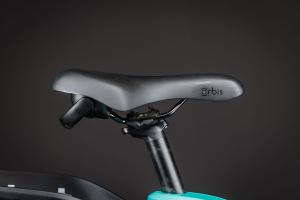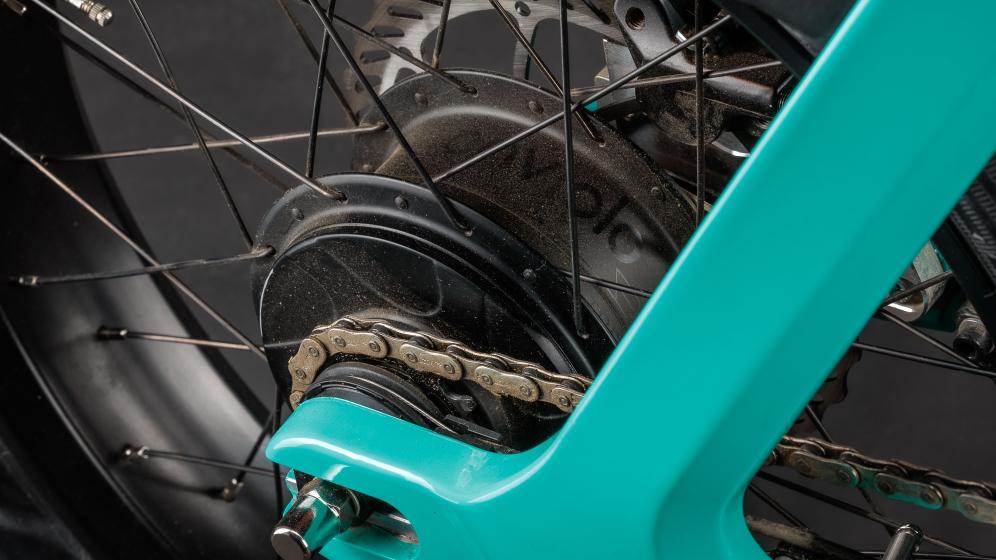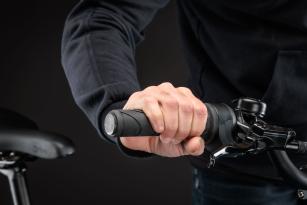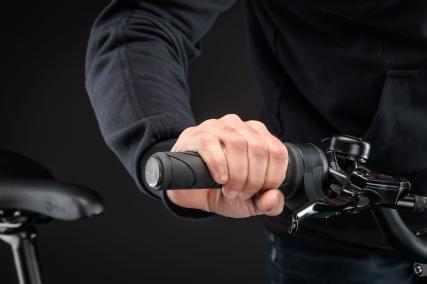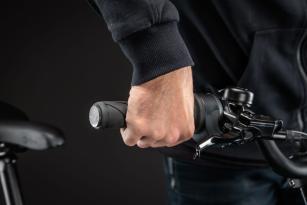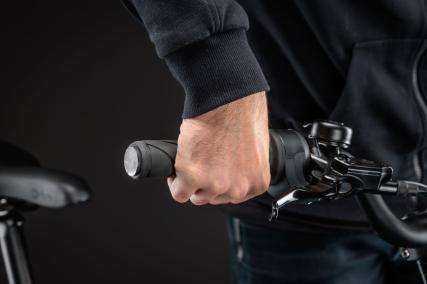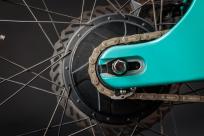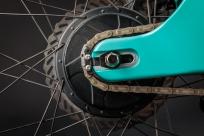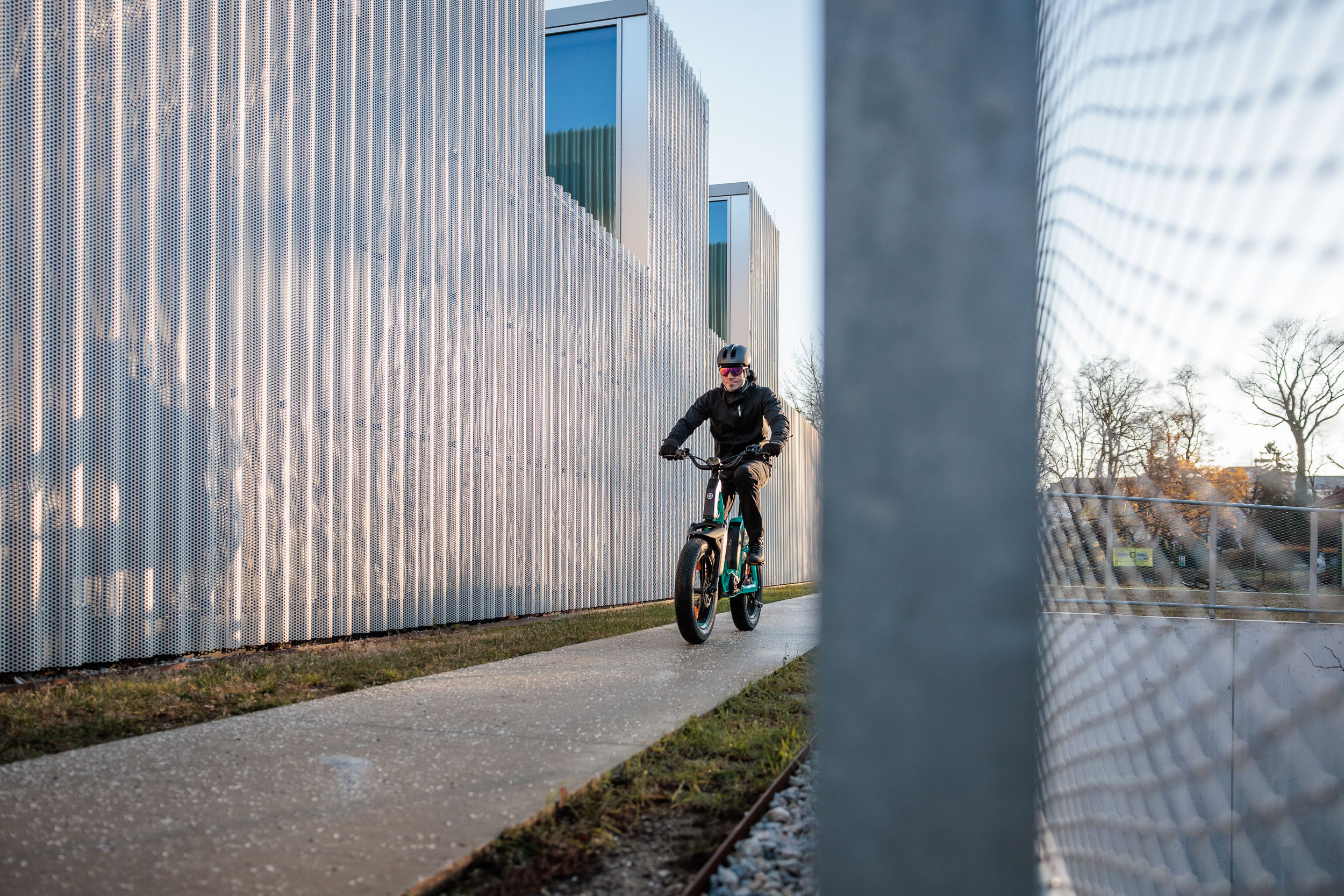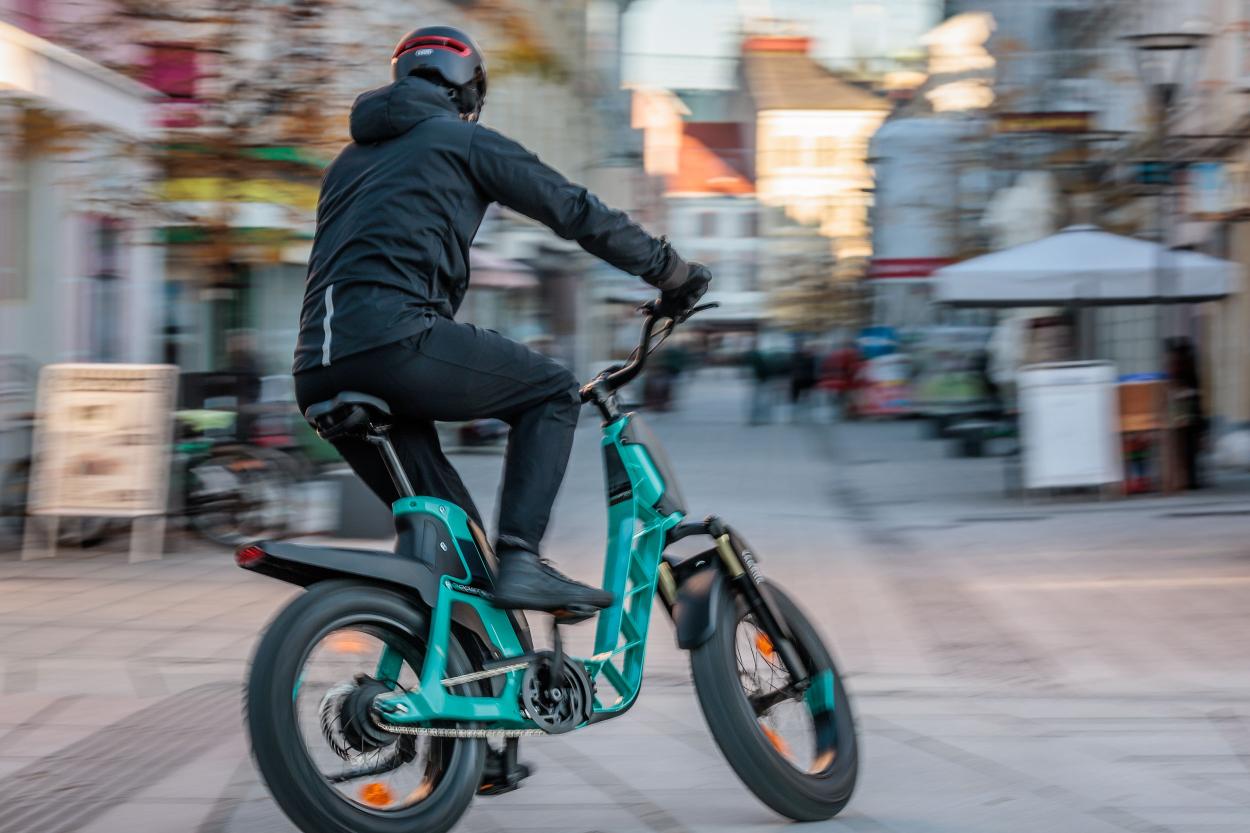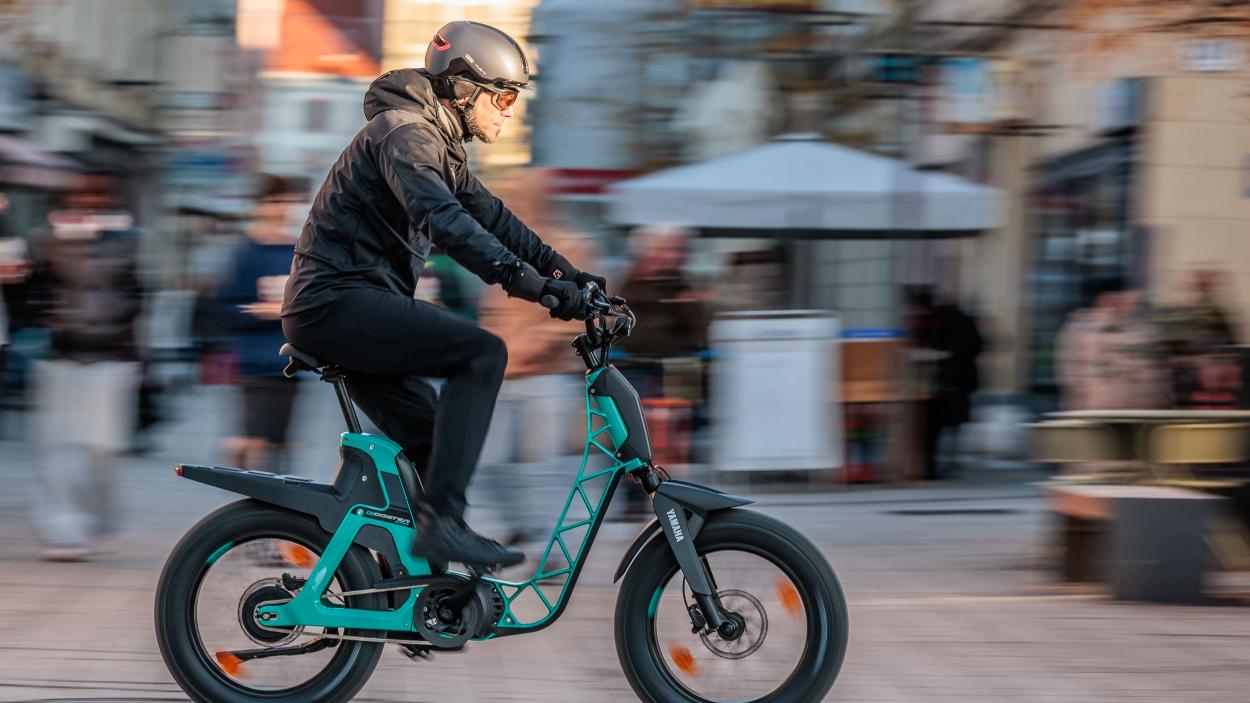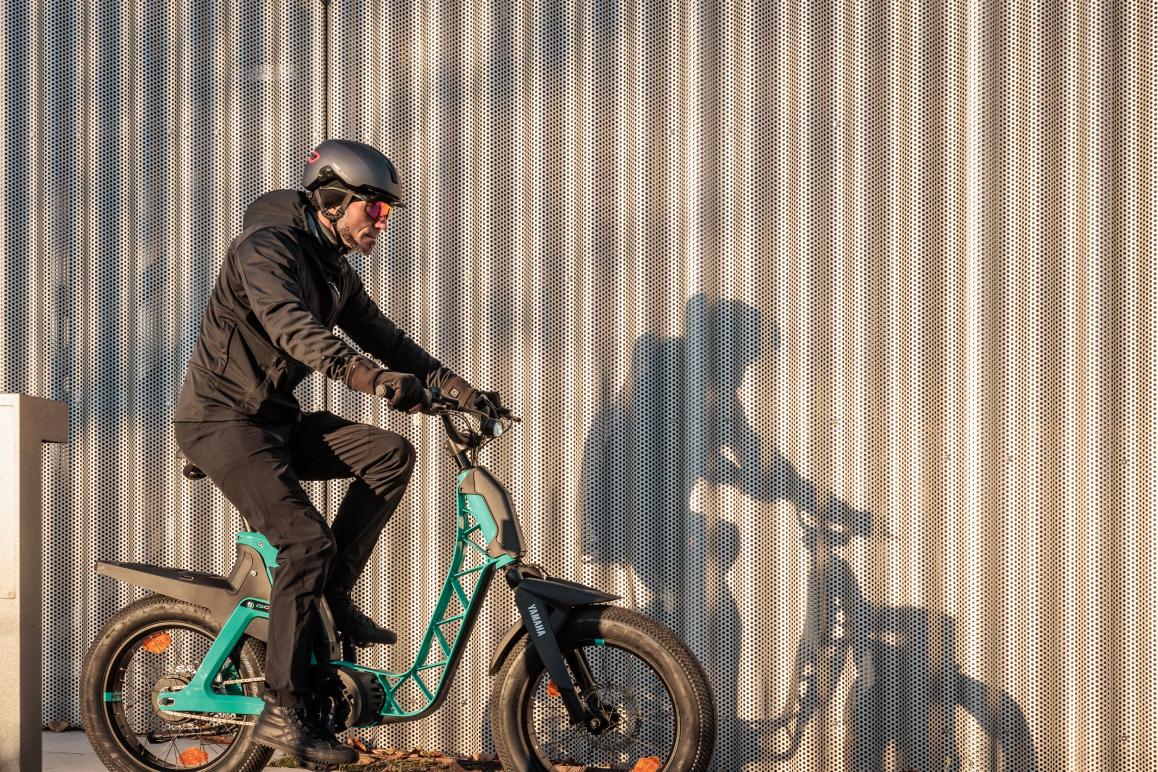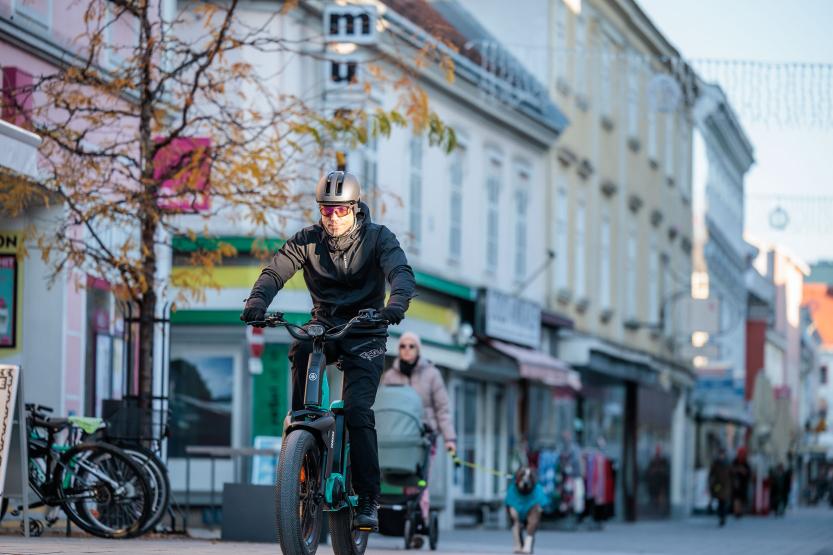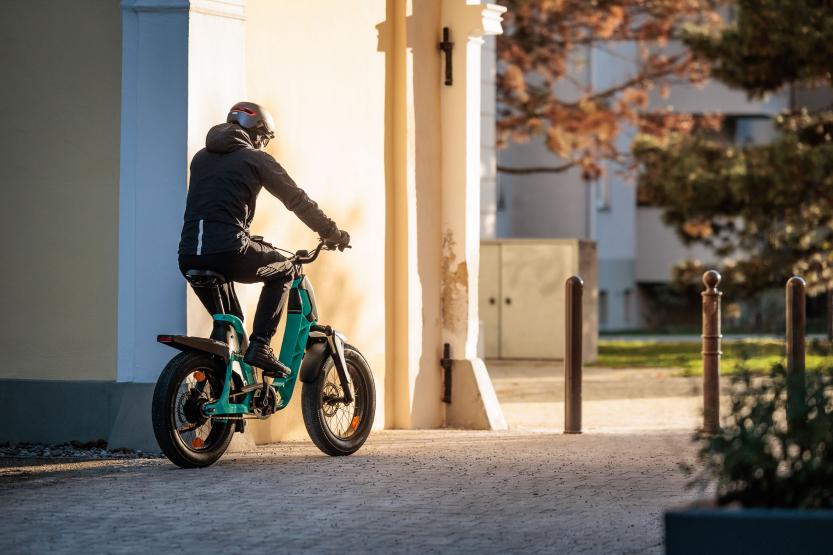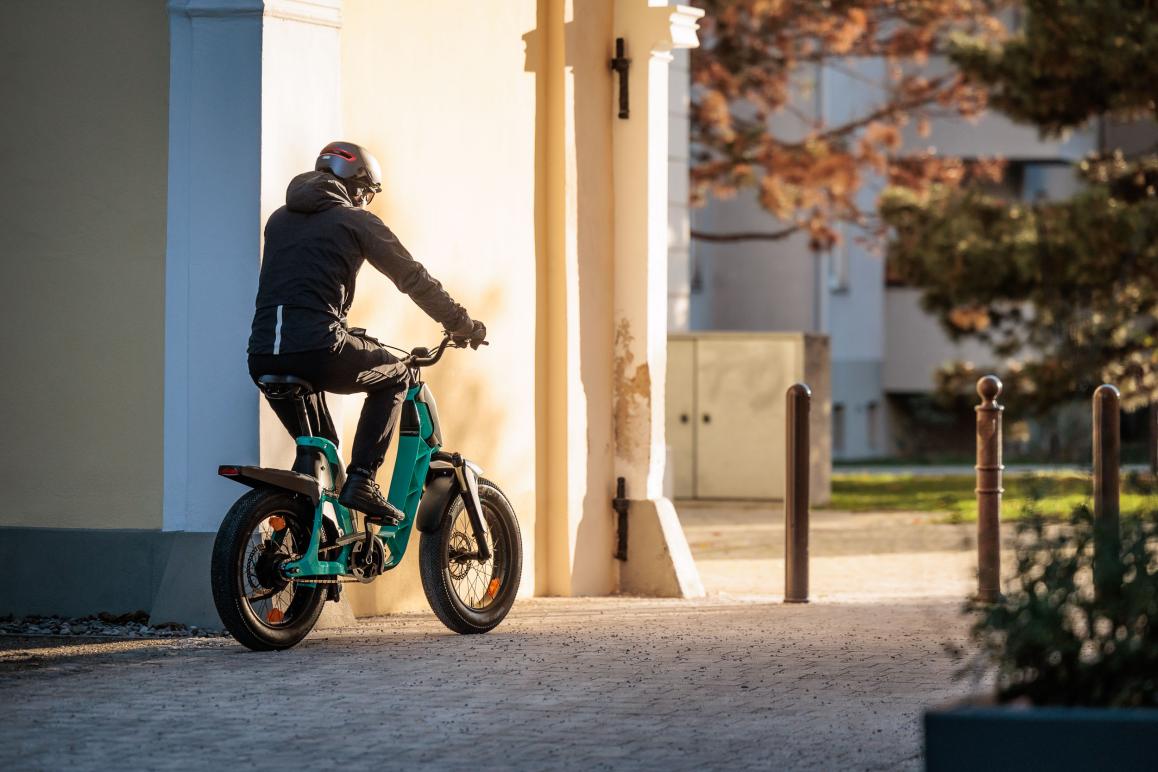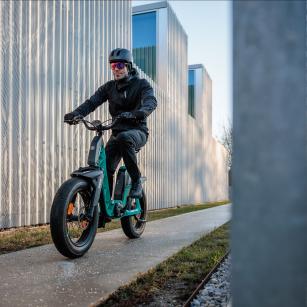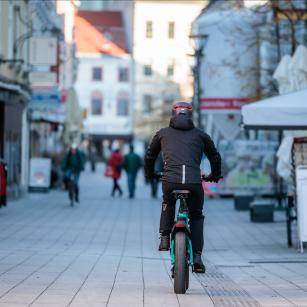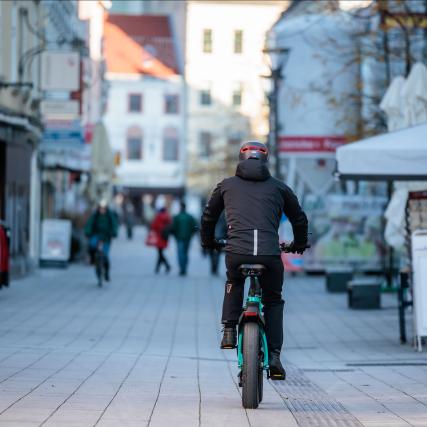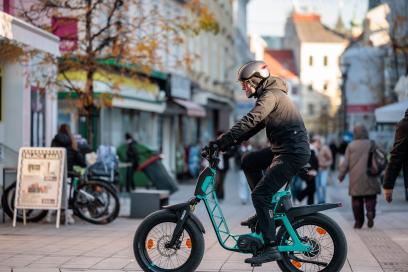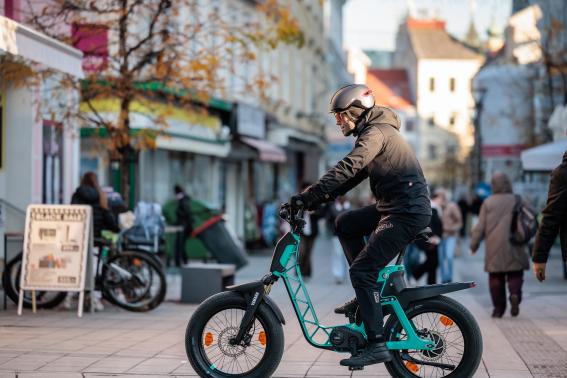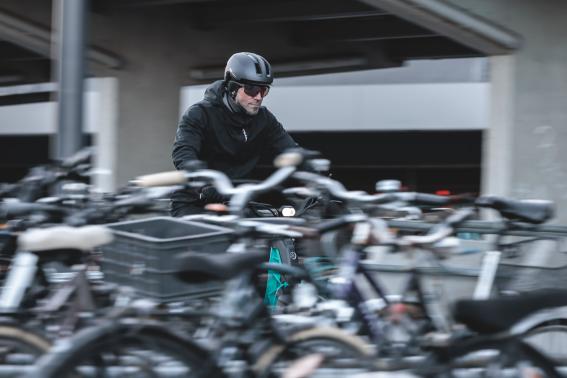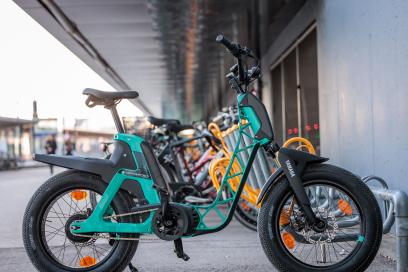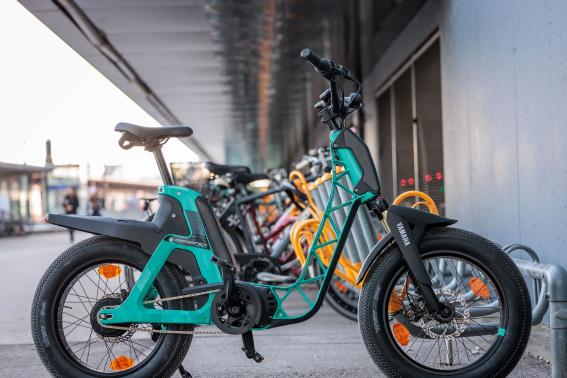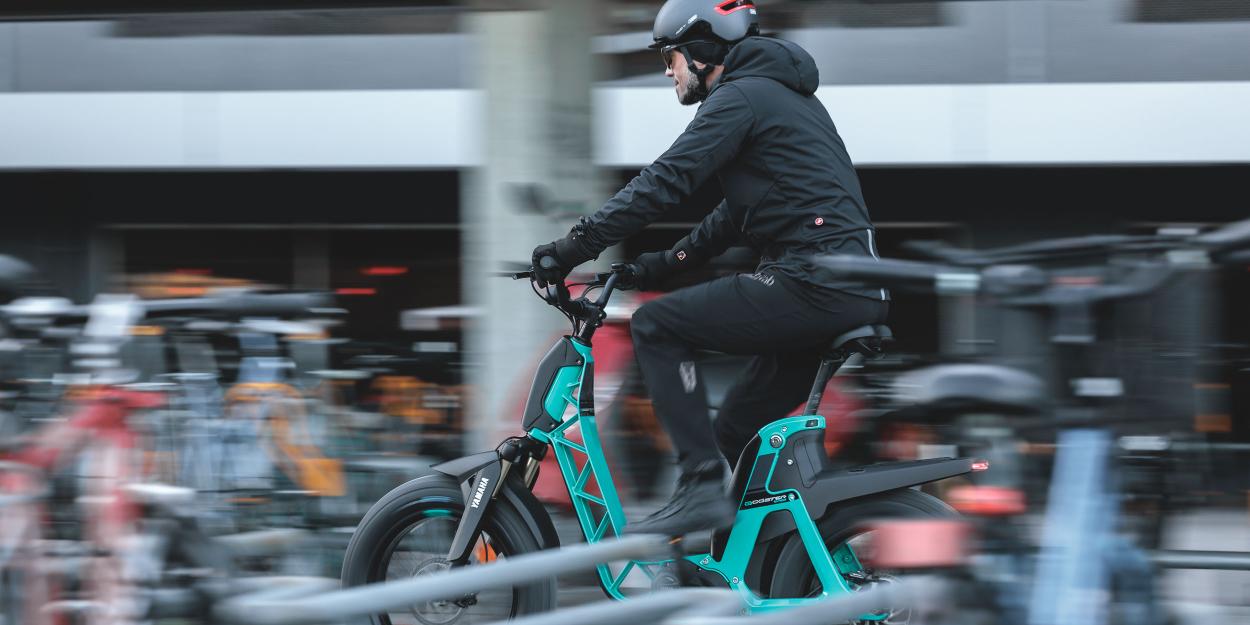
Yamaha Booster in Review
04.03.24 09:15 322024-03-04T09:15:00+01:00Text: NoPain (translated by AI)Photos: Erwin HaidenAdventure with practical benefits: Test ride with Yamaha's smart mode of transport through the urban jungle of Wiener Neustadt.04.03.24 09:15 2452024-03-04T09:15:00+01:00Yamaha Booster in Review
04.03.24 09:15 2452024-03-04T09:15:00+01:00 NoPain (translated by AI) Erwin HaidenAdventure with practical benefits: Test ride with Yamaha's smart mode of transport through the urban jungle of Wiener Neustadt.04.03.24 09:15 2452024-03-04T09:15:00+01:00Fatbike, Beachcruiser, or an electrified Puch Maxi? In our first introduction of the Yamaha Booster Easy, we already pondered whether the Austrian Puch factories might have been responsible for the design - which, of course, is not the case.
Rather, the inspiration for the appearance and name comes from the Yamaha BWS Booster, a versatile 50cc scooter from the 90s. Even back then, it was distinguished by larger tires and a more robust suspension compared to other mopeds, making it a preferred choice for riders who liked to venture off the roads, be it on gravel roads or field paths.
The same essentially also applies to the Booster Easy E-Bike, a practical step-through model with electric support, equipped with a rear carrier and optionally attachable baskets. Besides the 20-inch wheels with their ultra-wide 4-inch tires and the suspension fork, the unusually open, honeycomb-like design of the aluminum frame catches the eye, a design we already know from the Fantic Issimo E-Bike, which is also produced in France like the Yamaha E-Bike. Although both manufacturers use basic components such as frame, wheels, and fork, Yamaha opts for its own PW-S2 motor and a continuously variable bicycle transmission from Enviolo with Planetary CVP technology.
Yamaha Booster Easy - Part II
In this practical review, we would like to focus on the specific technical features of the Yamaha Booster Easy, its riding characteristics, as well as the advantages and disadvantages of urban use. All other technical data and information about accessories can already be found in our Showroom.
Take it Easy!
with the Yamaha Booster Easy E-BikeTechnical Components and Equipment
Yamaha's quiet PW S2 250 W motor with a powerful 75 Nm and a removable 630 Wh battery, which is integrated into the frame at the seat tube, features an automatic support mode that takes into account torque, riding speed, RPM, and the angle of incline in its calculations.
The result is consistently powerful, immediate, and smooth support, making riding feel completely natural.
The Display A control unit has three buttons on the bottom - one for quickly turning the drive system on or off, one for the front and rear lights, and one for the walk mode. With the two buttons on the top, the support levels can be selected.
The large-format LCD display includes a speedometer, a battery capacity indicator, the setting of the assistance level, a daily odometer, an odometer, and the range indicator.
Tech Specs
| Frame | Honeycomb structure aluminum | Seat Post | Promax 350 mm |
| Colors | Easy Aqua, Easy Tech Graphite | Chain | KMC 1v Z1eHX Narrow |
| Drive | Yamaha PW S2, 75 Nm | Wheels | Gipiemme 20" FAT |
| Battery | Yamaha Battery, 630 Wh, 36 V, 17.5 Ah | Tires | Vee Tire eSpeedster 20*4.00 |
| Display | Yamaha Display A LCD | Headset | FSA semi-integrated |
| Fork | Zoom CH-879 AMS 20", 80 mm travel | Stem | Promax 40 mm |
| Handlebar | Promax 750 mm | Grips | Switch 92-130 mm |
| Crank | Custom FSA ISIS 150 mm, 38T | Saddle | Selle Royal Orbis Unitech |
| Brake | Promax DSK-925, hydraulic, 180 mm discs front/rear | Cassette | KMC Enviolo Narrow, 16 teeth |
| Gear Shift | Enviolo Trekking Hub | Shift Lever | Enviolo Twist Pure without gear indicator |
| Weight* | 34.7 kg incl. pedals without baskets | Price | € 3,299 |
* 35 kg manufacturer's specification
The standard equipment includes factory-installed lighting systems, front by Roxim and rear by Koso, which draw their power from the Yamaha battery and can be switched on with a short press of the button on the display. The lighting is excellent, especially at the rear where it has been beautifully integrated. Other features include integrated cables, a rear luggage rack with a load capacity of 25 kg, and a height-adjustable Royal Orbis saddle.
Optional, Yamaha's extensive accessory program offers baskets for the front and rear, inner bags for baskets, and side bags, as well as high-quality pedals. Additionally, there is a mounting system for smartphones on the handlebar.
Enviolo planetary gear shifting
The Enviolo hub gear can be continuously operated via a twist grip and offers a large gear ratio range of 380%. Instead of shifting in fixed gears, the gear ratio and thus the desired cadence can be continuously adjusted. Turning the grip towards you makes pedaling easier, turning it away makes pedaling harder.
Function Principle
The Enviolo planetary gear system differs from conventional hub gears by using rotating balls instead of gears. These balls rotate around a common center and their own axis. To the left and right of the balls are two discs: The input disc transfers the pedal force to the balls, which in turn transfer the force to the output disc. This output disc then transmits the power to the wheel.
By turning the handlebar grip, the angle of the axes changes, which affects the inclination of the balls towards the input or output disc and thus varies the gear ratio. Due to the infinitely many contact points of the rotating balls, an unlimited number of gear ratios is available.
Enviolo Practical Experiences, Advantages and Disadvantages
In urban use, the Enviolo transmission offers an extremely smooth ride and excellent performance. After a short adaptation period, one can easily find the right gear, while the shifting processes are especially gentle and material-preserving - even when stationary or under load. Issues such as blocked gears, pedaling into emptiness, or loud noises are completely absent. Besides, thanks to the powerful Yamaha motor, frequent shifting is not necessary, allowing one to fully concentrate on the ride, traffic, or scenery.
However, the system has a lower efficiency, which means that with rapid topographic changes, large adjustments need to be made with the twist grip, sometimes requiring a regrip. Therefore, the manual Enviolo planetary gear system is mainly recommended for people who primarily ride on flat routes and prefer to avoid hilly areas with many steep climbs.
Seating Position & Ergonomics
The Yamaha Booster Easy targets a young or young-at-heart audience with its trendy design and is primarily positioned in an urban environment. This orientation is also successfully reflected in the pleasantly upright and relaxed sitting position, which, in combination with the wide handlebars, a low center of gravity, and the generously sized tires, promises safe riding characteristics.
However, the handling remains clearly on the mushy and imprecise side compared to modern trekking bikes or SUV E-MTBs. The lower the air pressure, the more cumbersome the riding feel, although the turning circle is small or the steering angle is on the agile side. In addition, the sitting position strongly depends on the body size, as the bike can quickly be too large or too small due to the availability of only one frame size.
Comfort & Handling
Together with the adjustable suspension fork in both compression and rebound, the grippy fat bike tires ensure a comfortable ride. They also feel very stable during fast descents and offer a lot of grip on slippery surfaces thanks to their grippy profile.
However, one should not expect too much from the performance of the suspension. The adjustment options are practical for optimizing the fork for pure asphalt or mixed rides on gravel or forest trails, or for adjusting it for a high load, but a real MTB feeling never arises. Therefore, it should be clear that deep potholes or rough terrain are not among the strengths of the Booster.
Moreover, one should not overdo it with the steering angle in fast or tight corners. Although the steering behavior is pleasantly predictable most of the time, the front wheel tends to collapse due to too much lean angle or too large a steering angle, not least because of the rearward center of gravity.
Power and Range
The Booster Easy is powered by Yamaha's PW S2 motor with 75 Nm of torque and offers four different support levels - "Eco+", "Eco", "Standard", and "High" - with torque values ranging from 60% for maximum range to 400% for maximum power. Additionally, there is an automatic mode that attempts to anticipate the needed support level and automatically switches modes.
After trying out all the variants, we quickly came to the conclusion that the combination of the four riding modes and the infinite gear variety offers almost confusingly many options. For those who don't necessarily need to pay attention to maximum range, we find that the automatic mode with a medium gear setting is the best solution in our opinion. This combination, along with the hub gear, ensures a harmonious and stress-free riding experience. Especially in the stop-and-go traffic of busy city centers, you can fully concentrate on riding and the surroundings and only have to make minimal adjustments to the gear.
In steeper terrain or on longer climbs, as well as in consistent topography - such as along the Danube - it is advisable to select an appropriate support mode and shift via the twist grip because then the relatively low efficiency of the Enviolo planetary gear system is completely sufficient.
Although the difference between the lowest and highest motor support is clearly noticeable, it is still difficult to make objective statements about the actual possible ranges of the 630-Wh battery with 17.5 Ah. Factors such as tire pressure, chosen gear, terrain, wind, rider size and weight, and especially the selected riding mode have a major influence. Nevertheless, we can assume realistic ranges between 50 and 100 kilometers.
Safety and Everyday Practicality
The large and heavy e-bike offers a high level of safety in city traffic and easily handles heavy loads. The hydraulic Promax brakes, although less known, are adequate for the requirements of the application area. They do require a bit more finger strength, but their controllability is good, and the 180-mm brake discs at the front and rear effectively decelerate even on steep descents.
Nevertheless, the 35 kilograms of live weight in everyday life, even with the walking assistance that allows the Booster Easy to accelerate up to 5 km/h at the push of a button, brings its challenges. Therefore, in addition to the test ride at the dealer, it should be considered to try carrying it up or down stairs or loading it into a train compartment or car.
Moreover, one should consider whether it is always possible to properly lock the e-bike for the individual use case, as the wide tires and the massive frame may not be compatible with all locks or parking spaces.
Conclusion
| Yamaha Booster Easy | |
|---|---|
| Model Year: | 2023/24 |
| Price: | € 3,299,- RRP |
| + | Chill riding experience |
| + | Top comfort and grip |
| + | Low entry |
| + | Tight turning circle |
| + | Quiet and powerful motor |
| + | Automatic mode |
| + | Smooth shifting |
| + | Modern design |
| o | Clumsy handling |
| o | Locking is difficult |
| o | Front wheel may collapse if too much lean angle is applied |
| - | High weight |
| - | Lack of mounting points for bottle and lock |
| BB-Verdict: | Innovative city cruiser with high fun factor and practical use. |
The Yamaha Booster Easy is more than just a practical means of transportation – it is a powerful lifestyle bike for urban adventurers who want to fully enjoy city life. It is equally suitable for comfortable commuting through the city as it is for close-quarters traffic combat during rush hour. Moreover, it impresses with its powerful motor, a wide range of gearing, robust 20-inch wheels, and fat, grippy tires, as well as a thoughtful full equipment package.
It should be noted that the high weight of 35 kg and the generous dimensions might pose a challenge depending on individual circumstances - whether in the stairwell, on camping trips, on the train, or on the car's bike rack.
The Yamaha Booster Easy e-bike is currently priced at 3,299 euros. The practical baskets cost 105.60 euros for the front and 87.60 euros for the rear. The luggage basket bags start at 43.78 euros, and a set of side bags (not pictured) costs 216 euros.
A final tip for those who want to check out the Booster Easy in person: Although it is an e-bike, it is not available in conventional bicycle or sports stores but is sold exclusively by authorized Yamaha dealers and can be test-ridden at selected motorcycle dealers.





